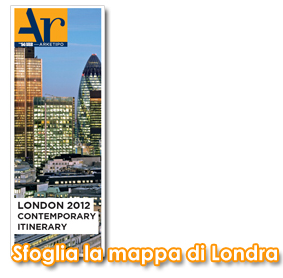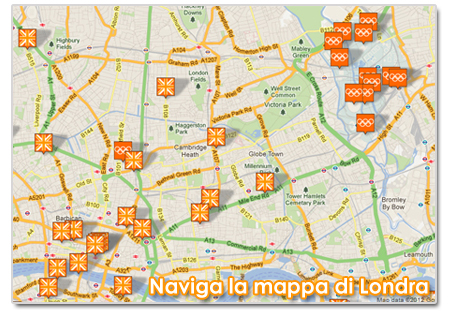Le grandi città dell'architettura sono quelle città nelle quali tutte le architetture che compaiono in periodi di grande e rapido sviluppo hanno in comune una sorta di senso di appartenenza, che fa capire come esse potevano nascere solo lì, e solo in quel momento. Un esempio notissimo di questo fenomeno è stata, a suo tempo, la rinascita di Berlino, culminata con la progettazione e la realizzazione della Potsdamer Platz. Siamo dunque convinti che anche in casi non straordinari come quello di Berlino, lo spirito della città sia in grado di informare tutti i progettisti che in essa operano, tanto da segnare ogni opera con una serie di caratteri che ne giustificano l'esistenza in rapporto con gli altri edifici preesistenti e nuovi o, più in generale, con l'irripetibile sistema della città stessa. Tutto ciò è vero in città che si rinnovano velocemente e in continuo, come Parigi, dove interi quartieri vengono recuperati nella loro globalità, per inserirsi armonicamente col nuovo aspetto nella maglia preesistente della grande città. Come Melbourne, dove un effervescente centro moderno e dinamico si insinua nel contesto in espansione di quartieri di case di piccola dimensione, secondo la tradizione dell'architettura australiana. Come le capitali delle repubbliche baltiche, dove la democrazia da poco raggiunta e affermata informa in modo totale le nuove realizzazioni che riscoprono fieramente, sia attraverso il recupero - a Riga - sia attraverso il nuovo - a Tallin - il ruolo storico delle città e il loro significato per la civiltà di quelle popolazioni. Anche Milano, negli ultimi anni, pare risvegliarsi da un sonno durato molto, troppo a lungo. I nuovi edifici, che sorgono un pò dovunque, ma anche in alcune localizzazioni in particolare, risentono certamente dell'appartenenza a un momento dell'architettura che tende a superare la dimensione localistica imponendo forme e tecnologie transnazionali. Si generano così insignificanti frutti della globalizzazione nei casi peggiori, ma anche nuovi episodi ricchi invece dello spirito giusto che è quello dell'innovazione, che nasce dalla memoria del luogo. Abbiamo scelto di parlare di Londra. Perché Londra? Perché è una delle città nelle quali lo "spirito" cui si faceva cenno prima è più forte, più vitale e più capace di caratterizzare lo sviluppo urbano ed edilizio. Perché la politica edilizia inglese ha da anni imboccato con coraggio prima, e più di altre, la strada che porta a un rapporto ottimale con il problema dell'energia. Perché Londra rappresenta ancora un punto di incrocio tra molte diverse culture, capace di generare un vero rinnovamento. Perché, infine, questo è l'anno delle Olimpiadi e, come sempre succede in occasioni del genere, l'architettura esplode quando eventi esterni le danno queste straordinarie occasioni di accelerazione.
The great cities of architecture are those where the architecture has emerged in periods of large scale and rapid development. They share a kind of sense of belonging, one which communicates how they could have only been created there, and only in that moment. A noteworthy example of this phenomenon was the rebirth of Berlin, which during its heyday culminated in the design and construction of Potsdamer Platz. We are convinced that also in less extraordinary cases than Berlin's, the spirit of the city can influence all the designers involved in working on it, leaving its mark on each project which justifies its existence in relation to the other pre-existing and new buildings, and more generally, to the unique system of the city itself. What is true about cities is that they renew themselves quickly and continually; like Paris, where entire neighbourhoods have been rehabilitated in their entirety, harmoniously inserting themselves with their new look into the pre-existing fabric of the great city. Like Melbourne, where a bustling and dynamic modern centre inserts itself into the ever expanding surrounding context of the traditional Australian neighbourhoods made up of small houses. Like the Baltic State capitals, where the recent arrival and assertion of democracy has informed new construction in a comprehensive way with the proud rediscovery - both in terms of rehabilitation (in Riga) as well as new construction (in Tallinn) - of the historic role of the city and what it means for the civilisation of these populations. And then there is Milan, which in recent years seems to be waking up from a long sleep, one which has lasted way too long. These new buildings - which are popping up a little bit everywhere but also in certain specific places - definitely suffer from belonging to an architectural moment that tends to disregard the local dimension and impose transnational forms and technologies. In the worst cases, this breeds the insignificant offspring of globalisation; however, there are also powerful new examples of the right kind of spirit - that of innovation - and one which emerges out of the memory of the place. We have decided to speak about London. Why London? Because, it is one of the cities where the "spirit" mentioned earlier is the strongest, the most vital, and the most capable of characterising urban development and construction. Because, for years now, the British building construction policy has forged ahead courageously (and more than any others) in the direction of an optimal solution to the energy problem. Because, London still represents a crossroads between many different cultures, and is capable of generating a real renewal. Because, in the end, this is the year of the Olympics and, as always happens on such occasions, architecture explodes when external events provide extraordinary opportunities for its acceleration.









